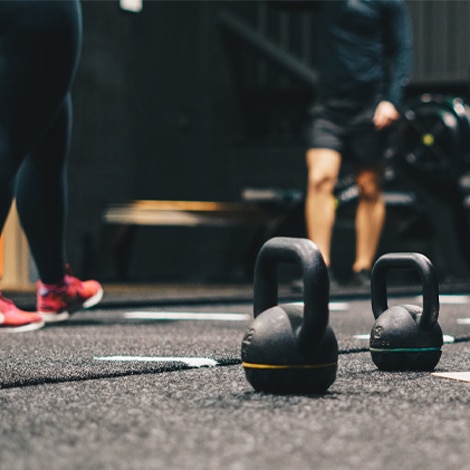By Mike Compton, Zoe Leach, and John Cortes
Accountability starts with a shared purpose and requires the right tools to make the team’s work visible on a daily basis. This article will explore how an Athlete Management System (AMS) can bring data and coaches, athletes, and performance specialists together to create a more accountable culture.
UNITING PERFORMANCE SPECIALTIES
One of the main ways an AMS like Smartabase can improve accountability is by bringing formerly disparate groups closer together and giving them a common language and purpose.
From nutrition to psychology to strength and conditioning, performance specialties tend to operate in distinct silos. Centralizing athlete data on a single platform can start to break down the walls between disciplines and foster communication and collaboration across the entire organization.
An AMS offers a unified view for everyone to see exactly how well individuals and the team overall are responding to training and recovery stimuli. It can also help athletes and warfighters move between touchpoints with different performance specialties with less friction. For example, if an injured athlete is cleared for weight training, but that information isn’t shared, the athlete may easily get out of lifting that day.
The communication tools built into an AMS significantly reduce such a lack of compliance. The head Athletic Trainer can easily notify the S+C coach of the player’s updated injury status and confirm which activities they are cleared to resume. By the time the athlete arrives in the weight room, the coach is already prepared and can keep them accountable. This is just one example of how an AMS can help get everybody on the same page and eliminate the communication breakdowns that hamper accountability.
INCREASING ATHLETE BUY-IN
An AMS helps athletes hold themselves accountable before they ever see the results of their performance on game day.
When the performance staff takes the lead and puts the right data in their hands in a simple, understandable way, they’re more likely to make positive changes to their behavior, training, and recovery. What’s more, providing instant information about how well a training session went, for example, creates a powerful feedback loop for athletes that lets them know how well they measure up to their own expectations and their teammates on any given day.
Coaches at The Royal Ballet were determined to share everything with their dancers, whether it was medical, psychological, or wellness data. Why? Because if athletes are confronted by reality every day, there’s a greater chance they’ll embrace it and take the necessary actions to improve. This all starts with a commitment to making the right information visible anytime, anywhere.
With Smartabase, whether an athlete is with their coach or not, at home or on the road, they’re able to see current and complete data about their preparation, recovery, and performance. This allows them to take more ownership of the process, compared to having data resided in cumbersome or inaccessible spreadsheets on their coach’s laptop.
In the military, every service member must go through regular physical testing. If they’re presented with the results immediately, it’s an ever-present reminder to take care of themselves so that they can be deemed ready for deployment with their units. When they get the facts in a very clear and concise way via dashboards and other visualization tools in the AMS, they’ll be more motivated to make changes to their lifestyle and training. For example, one soldier whose unit was using Smartabase recently lost 17.6 lbs. (8 kg.) in just a few weeks because he could see what his weight was and how far it was from his goal.
FOSTERING COMPETITION
In reserve units, most service members have full-time jobs and are too busy to be sifting through reams of unfiltered and disorganized information. This is why it is essential that they are provided with an at-a-glance view of their progress. If they’re entering wellness, sleep, and other data consistently, they’ll be able to start spotting trends. Should their numbers go up, then they can double down on what they’re already doing. Whereas if it’s a downward trend, they can make the necessary course corrections to get back on track.
Whether it’s a branch of the military or a sports team, dashboards can be used to stoke competition and encourage accountability among team members. Several soccer teams installed screens showing Smartabase dashboards in their locker rooms because they realized that when the players can see what everyone’s doing – or not doing – they’re more likely to push themselves to move up the leaderboard. Even those who might not consider themselves to be very competitive don’t want to be last or have their names highlighted in red because they haven’t completed their daily weigh-in or logged other information they’re expected to.
JOINING THE DOTS BETWEEN GOAL SETTING, EDUCATION, AND BEHAVIOR
Such data displays do not exist in isolation. Rather, they can be tied back into the team’s overall outcome and process-oriented goals to remind athletes or warfighters why they’re being asked to log certain information and how various metrics are related to performance and recovery targets.
Setting certain thresholds and data ranges can help to flag potential problems before they become unmanageable so performance and/or coaching staff can intervene. For example, if an athlete’s recovery data flags red for three or four days in a row, a performance specialist may see this as a sign to offer more resources on sleep hygiene, contrast therapy, or breathwork techniques to help the player relax. In this way, the data can be connected back to education and made actionable.
Such an approach doesn’t have to be merely reactive. One Smartabase client is using the system to drive a deeper understanding of nutrition. Players log a daily food diary for several weeks during their preseason camp and complete a weekly questionnaire on their eating and hydration habits and suggest what’s working well and what they can improve on. Then they go away and make these changes. This shows how an athlete management platform can help players become more proactive, accountable, and responsible for creating their own positive habits.
Other teams are using Smartabase to enhance their goal-setting process. It’s all well and good to set ambitious aims, but if this is a one-off exercise, goals can soon fall by the wayside as the grind of the competitive season starts to take its toll.
In contrast, if each player puts their goals into Smartabase, these can be displayed in their personalized dashboard, so every time they log in, they get a reminder of what they’re shooting for and are more motivated to take the necessary steps to reach this ultimate destination. When used correctly, an AMS ensures everything pertaining to athlete preparation and recovery is documented, visible, and actionable.
UTILIZING NOTIFICATIONS AND CUSTOMIZABLE MESSAGING
Another way an athlete management platform can kickstart a more proactive approach is by offering reminders, alerts, and notifications to athletes and coaches alike. In the midst of a busy day, it can be easy to forget to log into an app and submit certain data, even if it only takes a few seconds.
Getting automated prompts from the AMS removes this burden from the athlete and places it on the technology, so the individual doesn’t have to rely on their memory to log the desired data in the system. This way, essential tasks don’t fall through the cracks and there’s a consistent flow of information between athletes, coaches, and the performance staff.
Customization is also a way the AMS can increase accountability. In Smartabase and similar systems, the staff can adapt their messaging so it makes sense to the end users. Presenting information in verbiage they’re familiar with and presenting data so they can understand it at first glance makes compliance and engagement far more likely. In the end, everything an athlete or warfighter does should be tied back to their main goal: performing their best when it matters most. Implementing an AMS can help foster the accountability necessary to achieve this.
IF YOU ENJOYED THIS ARTICLE, YOU MAY ALSO LIKE…
- How To Get More Consistent Data into Your AMS
- How Data Drives a Winning Culture
- Case Study: US Ski & Snowboard








